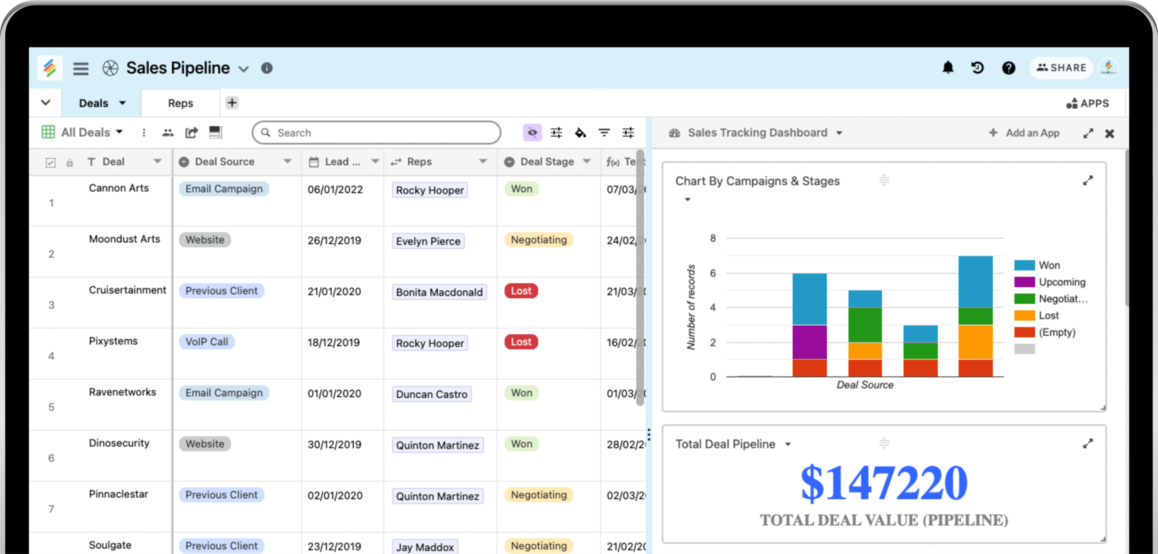Discovering the Advantages of Scalable Databases That Require No Coding Abilities for Effective Data Management Solutions
The emergence of scalable databases that get rid of the requirement for coding skills offers a transformative possibility for companies looking for efficient data management services. As we think about the ramifications of such improvements, it becomes essential to check out how they can reshape the landscape of data management and drive sustainable growth in an affordable setting.
Boosted Accessibility for Customers
Boosted access for customers is a critical aspect of scalable data sources, making certain that information monitoring systems are user-friendly and instinctive. In a period where data-driven decisions are critical, ease of access allows a bigger variety of individuals, including those without extensive technological knowledge, to engage with data source systems successfully. This democratization of data access promotes enhanced cooperation across divisions, equipping workers to extract understandings and make educated decisions.
Straightforward user interfaces, such as visual information and drag-and-drop functions depiction, simplify complex information interactions. These improvements reduce the understanding curve connected with standard database monitoring, enabling customers to concentrate on leveraging information instead of coming to grips with technical complexities. Scalable databases usually integrate real-time analytics and customizable control panels, giving customers with immediate insights tailored to their particular requirements.

Cost-Effectiveness and Source Savings
Reliable data monitoring not only hinges on ease of access however likewise on cost-effectiveness and resource cost savings. Scalable databases made for individuals with no coding skills significantly minimize financial problems generally connected with conventional data source administration systems. By eliminating the requirement for specialized programming know-how, organizations can designate their sources much more successfully, concentrating funds on core company tasks as opposed to extensive training or hiring proficient personnel.
Furthermore, these data sources often utilize cloud-based options, which better decrease expenses connected to equipment and upkeep. Organizations can scale their database services according to their requirements, staying clear of the expenditures incurred from over-provisioning resources. This versatility indicates organizations can adjust to changing demands without sustaining unnecessary costs, resulting in considerable long-lasting financial savings.
In addition, user-friendly interfaces streamline data entrance and administration processes, decreasing the time invested in administrative tasks. This efficiency translates into labor cost savings, allowing teams to concentrate on tactical efforts as opposed to routine maintenance. Overall, adopting scalable data sources that call for no coding abilities promotes a much more affordable method to information administration, allowing organizations to maximize their sources while keeping high degrees of operational efficiency.
Improved Collaboration Throughout Teams

Moreover, scalable databases facilitate seamless communication among employee. With easy to use user interfaces that call for no coding skills, employees can quickly develop, change, and share reports or dashboards tailored to their specific needs. This democratization of data equips non-technical individuals to contribute insights, improving the collective atmosphere.
Additionally, these databases support simultaneous accessibility, permitting numerous customers to work with the very same dataset all at once. This attribute boosts performance, as groups can engage in joint data analysis without the threat of variation control concerns. The capability to leave comments or notes directly within the data source better advertises dialogue and clarifies data analyses.
Streamlined Information Administration Processes
In today's data-driven atmosphere, organizations recognize the need of structured data management refines to take full advantage of effectiveness and accuracy. By leveraging scalable data sources that call for no coding abilities, services can simplify their information handling and minimize the complexities typically linked with typical data source systems. This ease of access empowers non-technical customers to engage company website straight with data, facilitating quicker decision-making and lowering reliance on specialized IT personnel.
Structured data monitoring processes boost process by automating regular tasks such as data entrance, validation, and coverage. Automated information integration makes certain that info from numerous sources is accumulated perfectly, removing silos and promoting a linked view of critical service metrics (no-code). Easy to use user interfaces enable personnel to control information easily, enabling them to produce understandings that drive tactical efforts without the demand for comprehensive training.
This effectiveness not just accelerates operational processes yet also reduces the possibility for human mistake, guaranteeing that data stays exact and dependable. Ultimately, streamlined data monitoring processes through scalable databases result in improved efficiency, permitting companies to concentrate on core tasks while ensuring that their data administration methods are reliable and reliable.
Scalability for Expanding Companies

For expanding enterprises, the capacity to scale up or down is vital. A scalable database can handle an increase of data generated from new customers, items, or services, guaranteeing that organization operations stay nonstop. These data sources supply the capacity to manage peak lots effectively, which is necessary throughout durations of fast development or seasonal spikes.
Furthermore, many scalable data page source solutions are created with easy to use user interfaces that need no coding abilities, equipping non-technical team to manage information effectively (no-code). This democratization of information monitoring enables companies to allocate resources purposefully and decrease dependence on specialized IT personnel
Eventually, taking on a scalable data source not just enhances functional performance but likewise cultivates an environment where services can develop and introduce without the restraints of conventional database systems. This versatility placements organizations for lasting success in today's affordable landscape.
Conclusion
To conclude, scalable data sources that call for no coding abilities provide significant advantages for effective information monitoring. These systems boost accessibility for non-technical users, decrease operational costs, and promote partnership throughout groups. By enhancing information monitoring procedures and supplying scalability for expanding organizations, such solutions enable organizations to adapt to changing demands effectively. Eventually, the fostering of these easy to use databases promotes development and settings companies website here for long-lasting success in a dynamic environment.
Improved ease of access for users is a vital aspect of scalable databases, making certain that information management systems are easy to use and intuitive.Straightforward interfaces, such as drag-and-drop features and aesthetic data depiction, simplify complex information communications. Overall, taking on scalable databases that call for no coding skills cultivates a much more cost-effective technique to data administration, enabling companies to maximize their sources while maintaining high levels of operational performance.
By leveraging scalable databases that require no coding abilities, businesses can simplify their data handling and minimize the complexities usually connected with traditional data source systems - no-code.Structured data monitoring processes improve workflow by automating regular jobs such as data entrance, recognition, and reporting